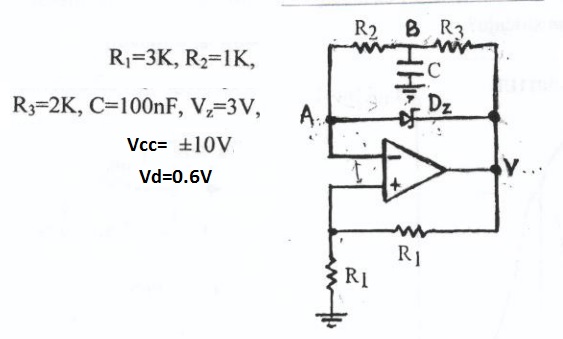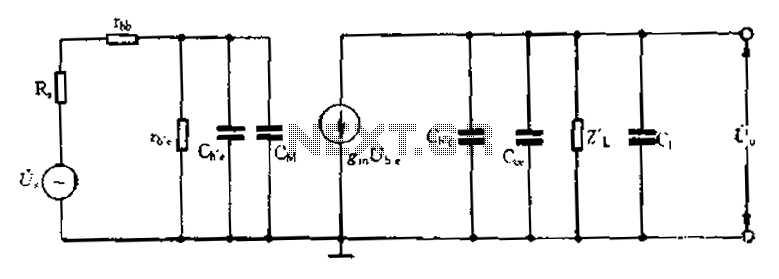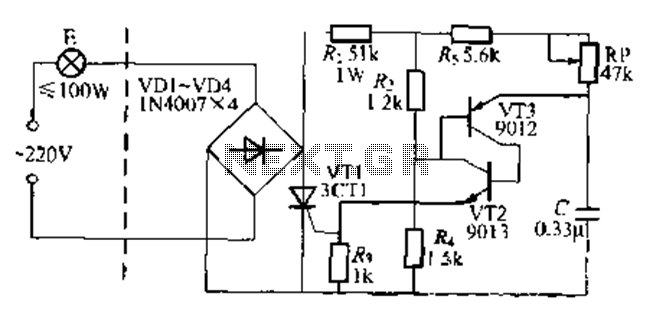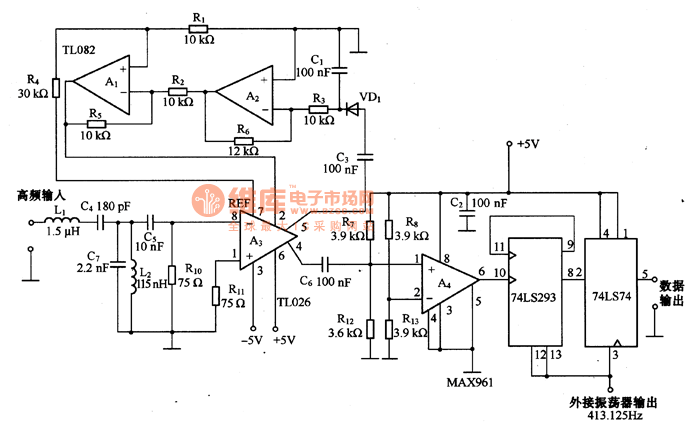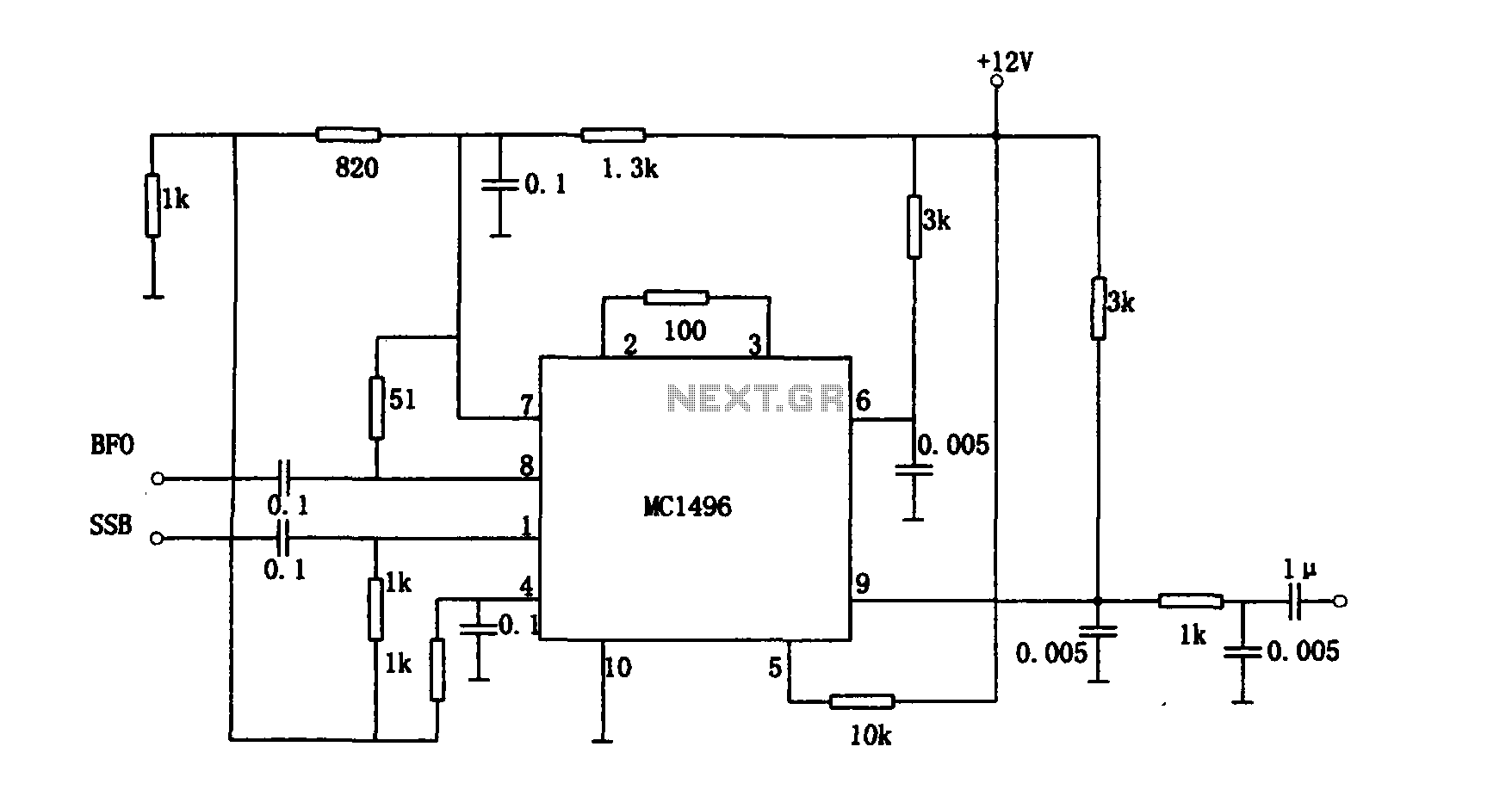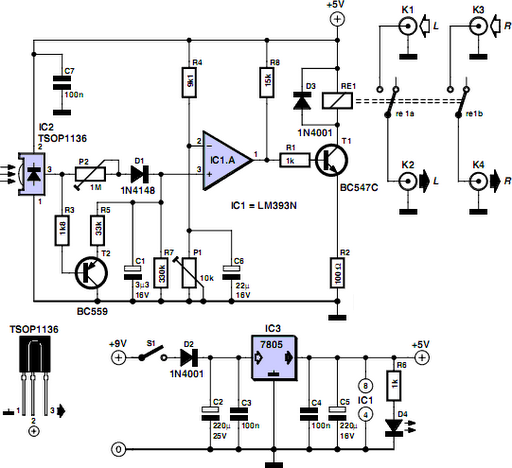
Gated 1Khz Oscillator (Normally Off) Circuit
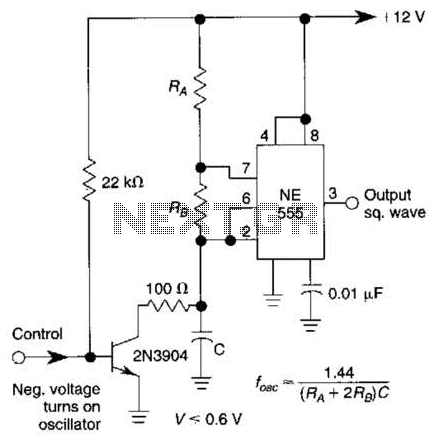
This gated 1-kHz oscillator provides a press-to-turn-on functionality, with waveforms available at the output of pin 3 and across capacitor CI.
The gated 1-kHz oscillator circuit is designed to produce a square wave output that can be activated by a momentary press of a switch. The oscillator operates at a frequency of 1 kHz, which is suitable for various timing and control applications. The circuit typically includes a timing resistor and capacitor that determine the frequency of oscillation, while the gating mechanism allows for the output to be enabled or disabled based on an external control signal.
Pin 3 serves as the primary output of the oscillator, delivering the square wave signal. This output can be utilized to drive other components or circuits, such as LEDs, relays, or microcontrollers. The capacitor CI, which is connected across the output, plays a critical role in shaping the waveform and filtering any noise present in the signal. The capacitor may also aid in stabilizing the output by providing a low-pass filtering effect, ensuring that the output waveform is clean and well-defined.
The press-to-turn-on feature enhances user interaction, allowing for easy activation of the oscillator without the need for a continuous switch press. This can be particularly useful in applications where a temporary signal is required, such as in timers or pulse generators. The design can be tailored to include additional features, such as adjustable frequency or amplitude, by modifying the component values or adding further circuitry.
Overall, this gated 1-kHz oscillator is a versatile component that can be integrated into various electronic designs, providing reliable timing signals with straightforward activation. This gated 1-kHz oscillator offers press-to-turn-on operation, A, and waveforms at the output of pin 3 and across CI, B. 🔗 External reference
The gated 1-kHz oscillator circuit is designed to produce a square wave output that can be activated by a momentary press of a switch. The oscillator operates at a frequency of 1 kHz, which is suitable for various timing and control applications. The circuit typically includes a timing resistor and capacitor that determine the frequency of oscillation, while the gating mechanism allows for the output to be enabled or disabled based on an external control signal.
Pin 3 serves as the primary output of the oscillator, delivering the square wave signal. This output can be utilized to drive other components or circuits, such as LEDs, relays, or microcontrollers. The capacitor CI, which is connected across the output, plays a critical role in shaping the waveform and filtering any noise present in the signal. The capacitor may also aid in stabilizing the output by providing a low-pass filtering effect, ensuring that the output waveform is clean and well-defined.
The press-to-turn-on feature enhances user interaction, allowing for easy activation of the oscillator without the need for a continuous switch press. This can be particularly useful in applications where a temporary signal is required, such as in timers or pulse generators. The design can be tailored to include additional features, such as adjustable frequency or amplitude, by modifying the component values or adding further circuitry.
Overall, this gated 1-kHz oscillator is a versatile component that can be integrated into various electronic designs, providing reliable timing signals with straightforward activation. This gated 1-kHz oscillator offers press-to-turn-on operation, A, and waveforms at the output of pin 3 and across CI, B. 🔗 External reference
Warning: include(partials/cookie-banner.php): Failed to open stream: Permission denied in /var/www/html/nextgr/view-circuit.php on line 713
Warning: include(): Failed opening 'partials/cookie-banner.php' for inclusion (include_path='.:/usr/share/php') in /var/www/html/nextgr/view-circuit.php on line 713
